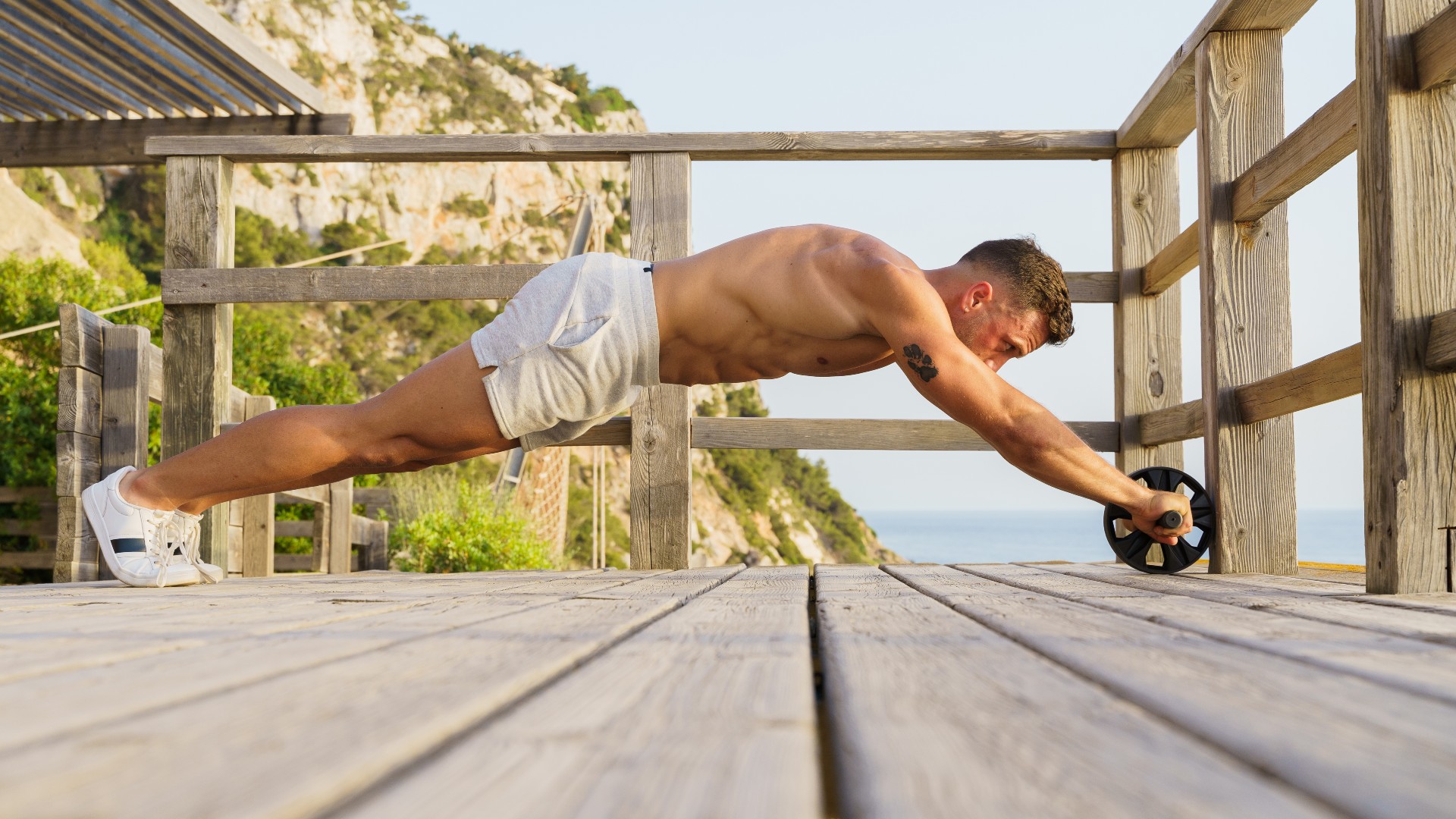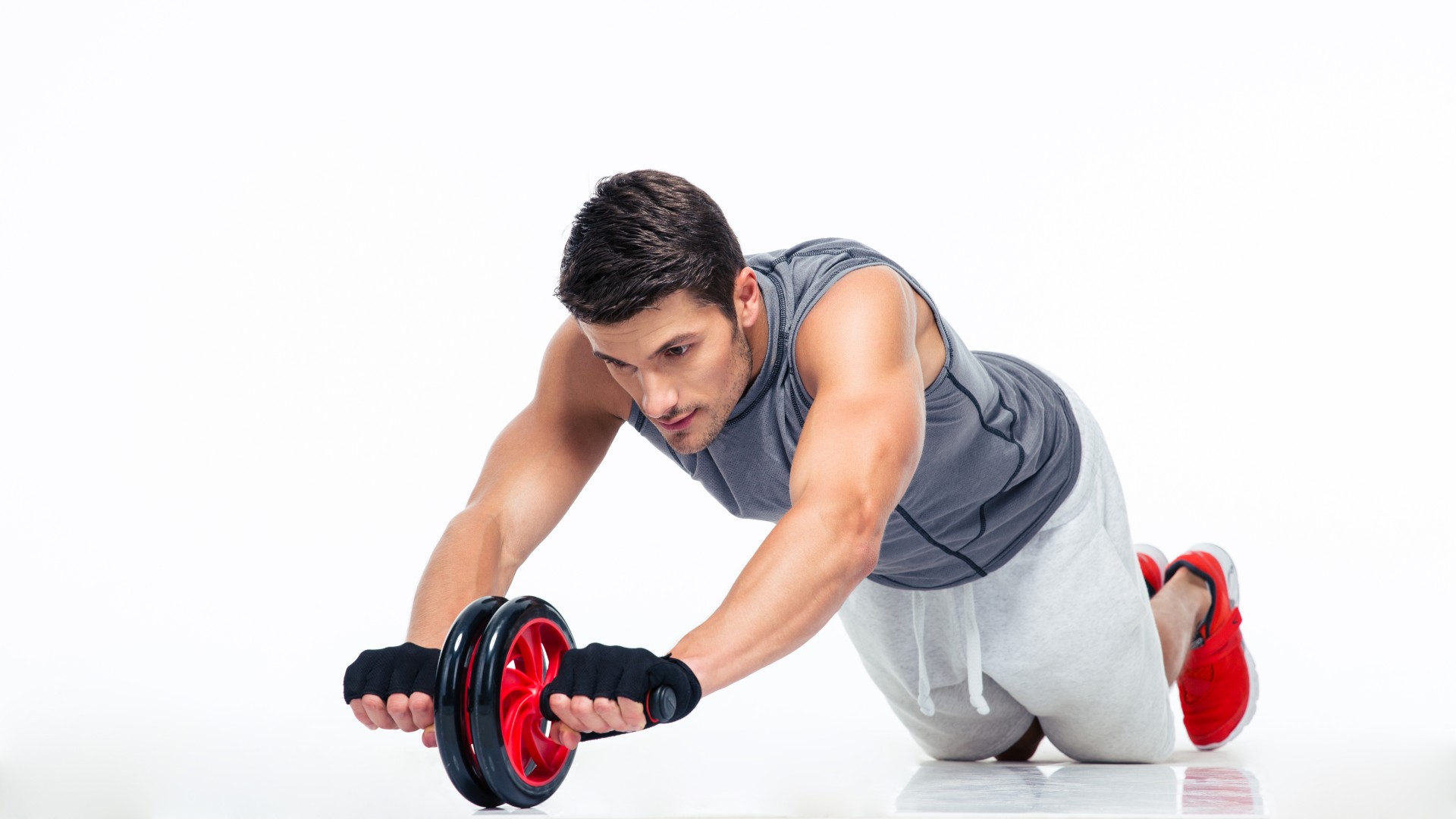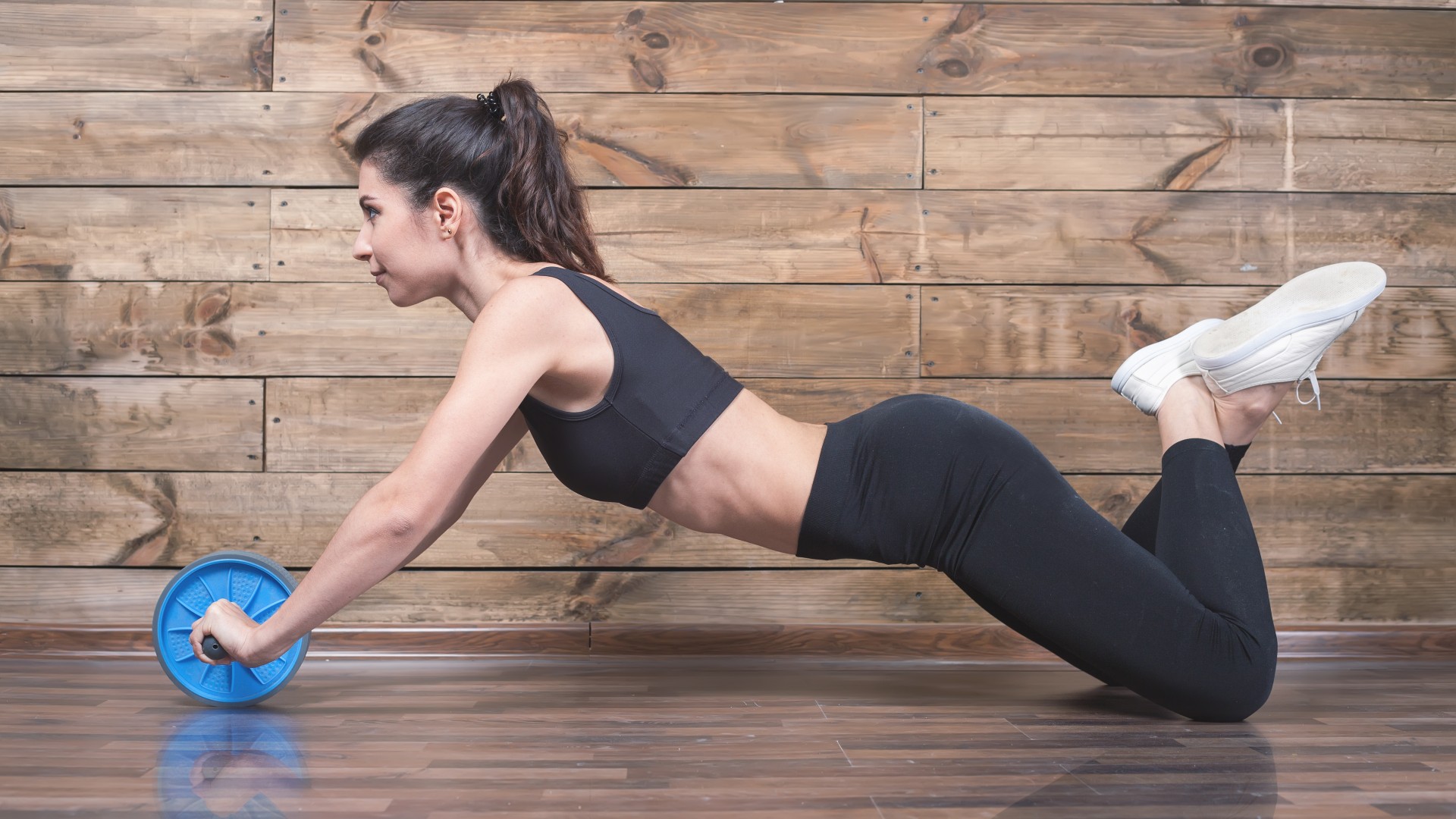
Ab wheel rollouts are one of the hardest ab exercises to nail in the gym. Anyone who plans to try them must have stable shoulders and existing mobility and core strength to avoid face-planting the floor or picking up a nasty injury.
Undeterred, I braved them and committed to 50 ab wheel rollouts every day for a week to see what (if anything) would happen to my abs. You could say I’ve been subconsciously preparing for this one already, using routines like this dumbbell abs workout to challenge and build a stronger core.
Of course, diet and factors like stress, sleep and regular exercise also determine ab definition (you can learn how to calculate your body fat percentage here). Change also doesn’t happen overnight, so I wasn’t expecting a rippling six-pack after just seven days. That said, I did notice a few interesting changes along the way.
If you’re searching for ways to strengthen your core and build lower ab definition, read on to see what happened when I did ab rollouts every day for a week.
What does the ab rollout exercise work?
The ab wheel rollout targets your core muscles like your rectus abdominis (six-pack muscles), erector spinae (spine stabilizers), transverse abdominis (a deep ‘belt’ of muscles that wrap around your trunk) and even your lats, chest, shoulders and arms.
To perform an ab rollout, you need an ab wheel that you can roll out as far as possible, then roll back in again. Sounds easy, right? Wrong. The instability of the wheel challenges your core to maintain balance and control, making it one of the trickier exercises to lock down. But if you do, it’s a very effective ab exercise to build muscle and strength and engages all core muscles at once.
Most people perform ab rollouts kneeling, but advanced core connoisseurs could perform them standing. The exercise can strengthen and define your midsection, but as mentioned above, building a toned tum comes down to more than one exercise, unfortunately.
Sign up to get the BEST of Tom's Guide direct to your inbox.
Get instant access to breaking news, the hottest reviews, great deals and helpful tips.
How to do ab rollouts

- Start on your knees and grip the handles of the ab wheel
- Engage your core, then shift your weight forwards so that your shoulders are over the wheel. Slowly roll the wheel forwards as far as you can, with control
- Keep your shoulders engaged to protect your joints and arms, and lift your hips. Avoid any sagging of your hips and chest
- Pause, then roll the wheel back to your starting position.
Not all ab wheels are equal. Features include thinner treads to make the exercise harder, and spring coils to add resistance or assist you on the rollback. Some models even have ergonomic handles to increase arm engagement.
If you plan to try ab rollouts, check the ab wheel to see if it's suitable beforehand, and seek medical advice if you suffer from lower back or shoulder pain.

I did ab wheel rollouts every day for a week — here are my results
I tried ab wheel rollouts every day for a week to see how my core coped with one of the toughest ab exercises out there. Here are my results.
1. My ab wheel rollouts got better (but I’m still kind of rubbish)
To perform ab wheel rollouts safely, you need plenty of shoulder stability to drive the ab wheel forwards, and I sadly suffer from a left rotator cuff injury. I can perform the movement safely enough with decent core engagement, but I don’t have the range of motion to fully extend, which means I get less back from the exercise.
I noticed some improvements to how far out I could roll out, and I also found it easier to control the wheel by the end of the week. They say practice makes perfect, after all. I’m far from perfect at the ab wheel rollout, but it was nice to notice progression and feel more comfortable with the movement pattern.
Ironically, I used the Perfect Ab Carver Pro, which has a coiled spring to assist. I found the assistance much easier on my shoulder, as it helped me roll back in, so if you’re a beginner or — like me — your shoulders are weak, this could be a solid option.
2. My shoulder hurt
As I mentioned, I’ve been nursing a rotator cuff injury for a few years. Even though I could safely do ab rollouts (I might not be telling my physio), I noticed some pain and had to back off by reducing my range of motion and cutting back from my intended 100 reps to 50 — lucky me.
The rotator cuff muscles in the shoulder assist in movement and stabilize your shoulder, which is crucial if you plan to perform exercises like pull-ups, presses, or ab rollouts in the gym. Therefore, these exercises have always been elusive to me. This time, I stuck with it by making small adjustments and was able to improve my technique, but it was a cruel reminder that rollouts might never be fully accessible.
3. It was killer, but I felt stronger
I split the 50 reps into five sets of 10 reps, adding 30 seconds between — far more manageable but still brutal. The ab rollout is killer, and I felt every inch of my upper body afterward. I could tell it was working most of my core muscles hard which I liked, and I managed to avoid any lower back pain, so I knew I was engaging my stomach properly.
By the end of the week, my stomach felt stronger (partly down to practice) but considering no other variables (like diet) had changed, I was hardly surprised that my stomach looked the same. Both shoulders felt stronger too, although my left one was sore. I noticed the most activation in my shoulders, six-pack muscles, and chest — this surprised me until I found research that shows your chest muscles engage more during ab rollouts than your lats!
My verdict
It was fun to try a new challenge, and I was super curious going into this, but no one needs 50 reps of ab wheel rollouts in their life. I recommend up to 40 if you’re incorporating them into a workout. I noticed my shoulders improving and my core adapting, but I’ll be sticking to a more shoulder-friendly and varied program to build my abs in the future.
If you’re new to ab exercises, why not give the best ab exercises and best ab workouts a go first?

Sam Hopes is a level 3 qualified trainer, level 2 reiki practitioner and senior fitness writer at Tom's Guide. She is also currently undertaking her Yoga For Athletes training course. Sam has written for various fitness brands and websites over the years and has experience across brands at Future such as Live Science, Fit&Well, Coach, and T3.
Having worked with fitness studios like F45 and Virgin Active, Sam now primarily teaches outdoor bootcamps, bodyweight, calisthenics and kettlebells. She also coaches mobility and stretching-focused classes several times a week and believes that true strength comes from a holistic approach to training your body.
Sam has completed two mixed doubles Hyrox competitions in London and the Netherlands and finished her first doubles attempt in 1:11.
